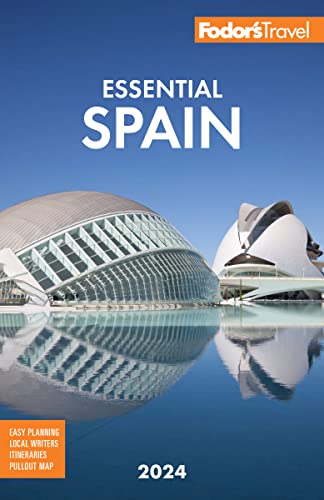Car Travel
Your own driver's license is valid in Spain, but U.S. citizens are highly encouraged to obtain an International Driving Permit (IDP). The IDP may facilitate car rental and help you avoid traffic fines—it translates your state-issued driver's license into 10 languages so officials can easily interpret the information on it. Permits are available from the American Automobile Association.
Driving is the best way to see Spain's rural areas. The main cities are connected by a network of excellent four-lane divided highways (autovías and autopistas), which are designated by the letter A and have speed limits—depending on the area—of 80 kph (50 mph)–120 kph (75 mph). If the artery is a toll highway (peaje), it is designated AP. The letter N indicates a carretera nacional: a national or intercity route, with local traffic, which may have four or two lanes. Smaller towns and villages are connected by a network of secondary roads maintained by regional, provincial, and local governments, with an alphabet soup of different letter designations.
Rental Cars
Alamo, Avis, Budget, Europcar, Hertz, and Enterprise have branches at major Spanish airports and in large cities. Smaller, regional companies and wholesalers offer lower rates. The online outfit Pepe Car has been a big hit with travelers; in general, the earlier you book, the less you pay. Rates run as low as €15 per day, taxes included—but note that pickups at its center-city locations are considerably cheaper than at the airports. All agencies have a range of models, but virtually all cars in Spain have manual transmission. Rates in Madrid begin at the equivalents of $60 per day and $190 per week for an economy car with air-conditioning, manual transmission, and unlimited mileage, including 21% tax. A small car is cheaper and prudent for the tiny roads and parking spaces in many parts of Spain.
Anyone age 18 or older with a valid license can drive in Spain, but most rental agencies will not rent cars to drivers under 23.
Road Conditions
Spain's highway system includes some 6,000 km (3,600 miles) of well-maintained superhighways. Still, you'll find some stretches of major national highways that are only two lanes wide, where traffic often backs up behind trucks. Autopista tolls are steep, but as a result these highways are often less crowded than the free ones. If you're driving down through Catalonia, be aware that there are more tolls here than anywhere else in Spain. This can result in a quicker journey but at a sizable cost. If you spring for the autopistas, you'll find that many of the rest stops are nicely landscaped and have cafeterias with decent but overpriced food.
Most Spanish cities have notoriously long morning and evening rush hours. Traffic jams are especially bad in and around Barcelona, Madrid, and Seville. If possible, avoid the morning rush, which can last until noon, and the evening rush, which lasts 7–9. Also be aware that at the beginning, middle, and end of July and August, the country suffers its worst traffic jams (delays of six to eight hours are common) as millions of Spaniards embark on, or return from, their annual vacations.
Roadside Emergencies
Rental agencies Hertz and Avis have (optional) 24-hour breakdown service. If you belong to AAA, you can get emergency assistance from the Spanish counterpart, RACE.
Rules of the Road
Spaniards drive on the right and pass on the left, so stay in the right-hand lane when not passing. Children under 12 may not ride in the front seat, and seat belts are compulsory for both front- and backseat riders. Speed limits are 30 kph (19 mph) or 50 kph (31 mph) in cities, depending on the type of street, 100 kph (62 mph) on national highways, 120 kph (75 mph) on the autopista or autovía. The use of cell phones by drivers, even on the side of the road, is illegal, except with completely hands-free devices.
Severe fines are enforced throughout Spain for driving under the influence of alcohol. Spot Breathalyzer checks are often carried out, and you will be cited if the level of alcohol in your bloodstream is found to be 0.05% or above.
Spanish highway police are increasingly vigilant about speeding and illegal passing. Police are empowered to demand payment on the spot from non-Spanish drivers. Police disproportionately target rental-car drivers for speeding and illegal passing, so play it safe.




